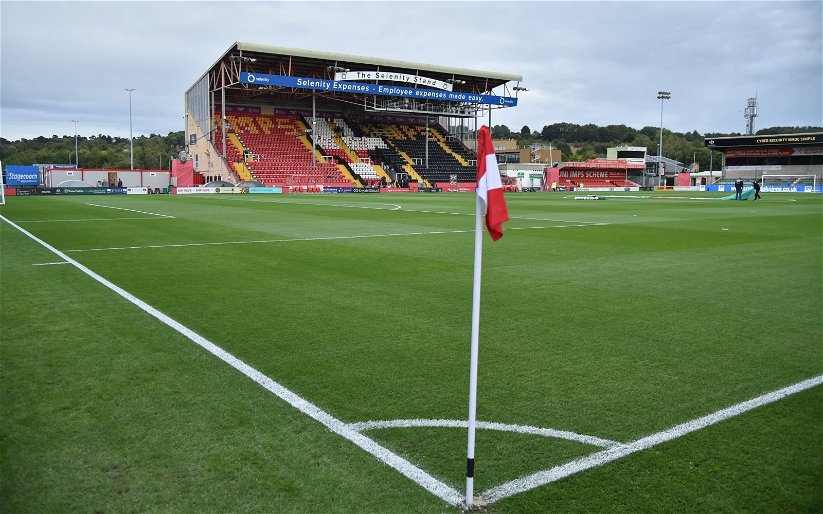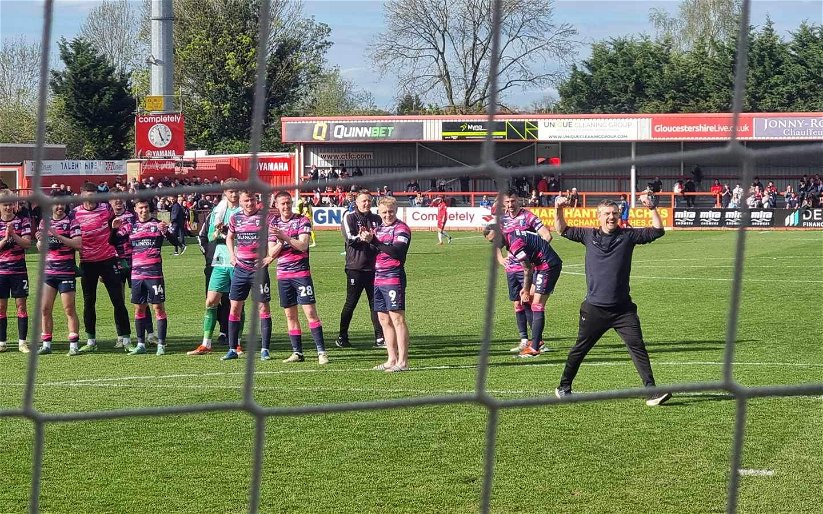“When the game was eventually played on 6 March 1963, City got off to a disastrous start with a goal after 15 seconds from Coventry striker Jimmy Whitehouse, and eventually lost 5-1. Third Division Coventry went all the way to the quarter-final where they were ironically beaten 3-1 by Manchester United.”
If you haven’t already had a go at our quizzes, this is a great way to learn some random information about the Football Club, as well as helping us generate much-needed page views: Quiz No.1, Quiz No.2, Quiz No.3, Quiz No.4, Quiz No.5, Quiz No.6, Quiz No.7, Quiz No.8, Quiz No.9, Quiz No.10, Quiz No.11, Quiz No.12, Quiz No.13, Quiz No.14, Quiz No.15, Quiz No.16, Quiz No.17, Quiz No.18, Quiz No.19, Quiz No.20, Quiz No.21, Quiz No.22, Quiz No.23, Quiz No.24, Quiz No.25, Quiz No.26, Quiz No.27, Quiz No.28, Quiz No.29, and Quiz No.30.
I know the answers for Quiz No.18 are available below, but if you haven’t had a go, don’t read the answers and give it a go along with the other quizzes!
1. Why did City centre half and assistant manager Ian Pearce hit the headlines in the game against Cheltenham Town on 14 November 2009?
a) He scored a hat-trick of headers
b) He received two yellow cards without receiving a red
c) He was involved in an altercation with one of his own players
d) He was sent off as an unused substitute
He was sent off as an unused substitute. City’s Aaron Brown had just been sent off in the 69th minute, and a scuffle ensued between the two benches in the Cheltenham technical area. When order was restored, City substitute Pearce and Cheltenham substitute Barry Richardson (who else?) were sent off. Chris Sutton was also sent to the stand. The match finished 1-1.
2. What was the name of the York City player who tragically died on the pitch during City’s game at Bootham Crescent on 8 September 1990?
a) David Hurst
b) David Longhurst
c) David Broadhurst
d) David Midhurst
It was speedy striker David Longhurst, who was causing Lincoln lots of problems before heart failure took his life shortly before half time. The match continued, although the players clearly knew what had happened and did not want to play on. The match was abandoned at half time. The post mortem revealed a serious heart defect – cardiomyopathy – that had gone undetected. Longhurst was the first player to die during a Football League match since 1927, and has a stand named after him at the soon to be demolished ground.
3. During the notoriously long winter of 1962-63, City’s FA Cup third-round tie against Coventry was postponed a record 15 times. Where did Coventry manager Jimmy Hill suggest the game could be played?
a) Madrid
b) Lisbon
c) Dublin
d) Miami
For some strange reason, Ireland escaped the icy blast that blanketed the rest of northern Europe under several feet of snow and ice. The snow had started on Christmas Eve and continued for two months until the first week in March. At the start of February, the Football Association stated that clubs should play their ties on any fit pitch. Coventry played Manchester United in a friendly in Dublin on Saturday 2 February (a 2-2 draw in front of 15,000), and Hill made his suggestion to Lincoln two days later – at that point, the tie had been postponed seven times. Although he was being entirely serious, Hill was not taken up on his suggestion. When the game was eventually played on 6 March 1963, City got off to a disastrous start with a goal after 15 seconds from Coventry striker Jimmy Whitehouse, and eventually lost 5-1. Third Division Coventry went all the way to the quarter-final where they were ironically beaten 3-1 by Manchester United.
4. Which famous England cricketer turned out for the Imps during World War Two?
a) Bill Edrich
b) Peter May
c) Denis Compton
d) Len Hutton
Squadron Leader William John Edrich, DFC. Although mainly stationed at RAF Great Massingham in his native Norfolk, Bristol Blenheim pilot Edrich spent some time in Lincolnshire through his role with Bomber Command.
In keeping with his Middlesex and England partner Denis Compton, Edrich also played football at the highest level. He started as an amateur left-winger with local side Norwich City in 1932, although he never made a first-team appearance for them. He moved to Tottenham Hotspur in October 1934 via their nursery side Northfleet, and went on to make 20 appearances for Spurs, scoring 4 goals. The opportunity to tour India with Lord Tennyson’s XI in the winter of 1937-38 led to his contract with Spurs being suspended on the condition that he returned to White Hart Lane after the tour. He never did, deciding correctly that his future lay in cricket. He signed for Southern League Chelmsford in August 1939, but it was a short stay as all football was suspended due to hostilities on 8 September. He made one appearance for Bournemouth in wartime football before playing his final competitive football match in the colours of Lincoln City in a North Regional League match at Sheffield United on 26 October 1940. The match finished 3-3, the goals coming from Allan Hall, Bernard Towler and Arsenal’s Les Jones in front of a sparse crowd of 2,299
Interestingly, Spurs actually retained his Football League registration until the summer of 1947, when they finally accepted that he was not coming back.
5. ‘The cobra has an excellent habit of wriggling free’: which player was Colin Murphy writing about in November 1988?
a) Phil Brown
b) Gordon Hobson
c) Mark Wallington
d) Graham Bressington
Gordon Hobson, who scored a hat-trick in City’s 4-1 win at Burnley on 8 November 1988. Writing in the match programme for the home game against Exeter on 12 November, Murphy philosophised, ‘The cobra has an excellent habit of wriggling free, and indeed Gordon Hobson wriggled three at Burnley…’ What was he on about? No one knows.
6. Which former City player was jailed for 15 years in November 2018?
a) Charlie Hartfield
b) Riccardo Calder
c) Reece Thompson
d) Jamie Clarke
Jamie Clarke, by then using his real first name of Andre, was jailed for 15 years for affray, kidnapping, causing grievous bodily harm with intent, and two counts of false imprisonment. Clarke had become involved in drug dealing, and severely tortured his victim over the disappearance of 1kg of heroin.
Charlie Hartfield also became involved in drug dealing, receiving a nine-year prison sentence in March 2014 after admitting conspiracy to supply amphetamine and cannabis.
Riccardo Calder was jailed for nine months in December 2018 for assaulting a woman in a car park who had crashed into his car during a drive to a nightclub. The punchline? She was a friend of his.
Reece Thompson was jailed for 40 months in April 2019 for attacking his former partner with an iron bar, forcing her to eat paint, and smashing two mirrors over her head in a three-day ordeal. He also received a ten-year restraining order. Having been released early in January 2020, Thompson breached the terms of his release and was sent back to prison in February to complete his sentence.
All former Imps, but none of them made any impression at the club. Clarke made 23 appearances in poor teams under Peter Jackson and Chris Sutton, scoring 4 goals (coincidentally scoring one in the game against Cheltenham mentioned in Q1). Hartfield made 3 appearances (1 goal) on loan from Swansea in 1998-99, and Calder made 2 appearances on loan from Aston Villa as City closed in on the National League title in 2016-17. Thompson’s City career lasted just two minutes, as a late substitute in probably the lowest point in the club’s history, the 3-1 defeat at Carshalton in the FA Trophy on 18 January 2012.
7. When City set their record attendance of 23,196 in the League Cup against Derby on 15 November 1967, by how many did it beat the old record?
a) 50
b) 100
c) 150
d) 250
It beat it by 50. The previous record of 23,146 had been set in the Second Division game against Grimsby on 5 March 1949, when goals from Jock Dodds and George Eastham were not enough to prevent a 3-2 defeat. The Grimsby attendance still stands as the club record for a league match.
Interestingly, that record attendance against Derby is also the last time the Imps enjoyed an attendance of over 20,000 at Sincil Bank. The next largest was the 16,498 who turned out for the Fourth Division game against Scunthorpe on 18 March 1972.
8. Why did Lincoln go down to a 9-1 defeat at Wigan Borough on 3 March 1923?
a) They played without a goalkeeper for most of the match
b) They had only eight fit players
c) They had four players sent off
d) They lost four players through injury
They played without a goalkeeper for an hour after Jack Kendall was hit on the back of the head by the ball as it came down off the crossbar. A barely conscious Kendall was taken to hospital with the score at 2-0, and left-back George Greaves went in goal for the remainder of the match. The loss of Kendall also meant that City were down to ten men in those pre-substitute days. Watched by a crowd of 8,000 at Springfield Park, City’s consolation was scored by William Morton. The 9-1 win was Wigan Borough’s record Football League victory.
For a number of seasons after the First World War, the practice was to play the same team home and away in successive games. The return game took place at Sincil Bank a week later, with City winning 2-1 courtesy of two more goals from William Morton. Wigan were clearly impressed with Morton – they signed him three months later.
9. Matt Rhead finished top scorer in 2016-17 with 14 goals, but who was second with 13?
a) Theo Robinson
b) Nathan Arnold
c) Adam Marriott
d) Lee Angol
Nathan Arnold, who was actually top scorer until the final two months of the season when things started to go a bit wrong for him. Robinson finished with 9 (7 in the FA Cup, one short of the club record), Angol with 6, and Marriott with just 4.
10. And the quirky one to end with. What dubious claim to fame was held by centre half Cyril Hunter, who made 14 appearances for the Imps in 1929-30?
a) He scored a Football League record 10 own goals in one season
b) He played for a Football League record 8 different clubs during one season
c) He received the longest ever suspension from football
d) He was the first footballer to be jailed because of an incident during a football match
Are you sitting comfortably? This is a real cracker.
Although softly-spoken and cultured off the pitch, Hunter was known for being an uncompromising central defender at a time when referees were far more lenient that today’s card-waving robots. A series of disciplinary issues came to a head following a Second Division match between league leaders Middlesbrough and Hunter’s South Shields at Ayresome Park on Wednesday 16 March 1927.
Champions-elect Middlesbrough beat their lowly neighbours 5-0 with a George Camsell hat-trick in front of a bumper crowd of 25,322, the largest in England that day. But the game will be remembered for an individual performance that ‘left the Middlesbrough dressing room looking like an ambulance station’, and because of one man. Camsell himself was the first to receive the Hunter treatment, receiving a broken thumb early in the first half and having to be helped into his clothes at the end of the game. Winger Billy Pease, who had won his first and only cap for England the month before, was flattened by Hunter in the 55th minute and received a broken collar bone. The referee finally lost patience with Hunter in the 80th minute when he floored Ireland international right-half Joe Miller in the box, and sent him for an early bath. Camsell missed the penalty, presumably because of an aching thumb.
The FA lost patience with Hunter, and in April suspended him for six months until November 1927. It was the longest suspension handed out to any player until Eric Cantona’s eight-month ban in 1995.
Hunter left South Shields in 1928 and spent a year playing in America before signing for Lincoln in June 1929. After one inconsistent season at Sincil Bank, he returned to his native north-east and found work in the furniture trade. However, he was soon at it again. He made a brief comeback and was sent off in April 1931 while playing for Gateshead Reserves; this time he was suspended until the end of the following season, a 12-month ban. He never returned to football after that, and died in 1962 at the age of 64.
As a footnote, his treatment of 24-year-old striker George Camsell is perhaps understandable within the context of the times. Camsell went on to score 59 league goals that season to set a new Football League record. Sadly, he held it for only one season, being overtaken by Dixie Dean’s 60 for Everton in 1927-28. He totalled an astonishing 345 goals for Middlesbrough in 453 appearances. Camsell’s record for England is also startling: 18 goals in 9 internationals, which still stands as the best goals to game ratio of any England player. He scored in every game.
Writer: Scotimp
"Third Division Coventry went all the way to the quarter-final where they were ironically beaten 3-1 by Manchester United."https://t.co/EtC4WaRpls#MUFC #PUSB pic.twitter.com/eLbX2XSsdv
— Vital Lincoln City (@VitalLincoln) August 31, 2020
https://www.facebook.com/VitalLincolnCity/posts/3231644346871788



